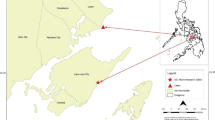Abstract
Mycelium of shiitake (Lentinula edodes) was cultured continuously in liquid medium. The liquid culture was carried out for the production of liquid spawn in the cultivation of this mushroom on synthetic sawdust substrate, and its performance was compared with that of the solid spawn. The initial colonization in culture bags was faster with the solid spawn than with the liquid spawn, but after this stage CO2 production was higher with the liquid spawn than with the solid spawn. For harvesting sufficient amount of good quality mushrooms, 120 d of incubation in bags was needed with the solid spawn, but this was reduced to 90 d for the sawdust blocks using liquid spawn of less than 50 d old. If continuous culture of the liquid spawn was prolonged over 50 d, immature fruit-bodies or their initials formed during the period of bag incubation. The solid subcultures of the liquid spawns retained the fruiting characteristics acquired in the liquid culture. Liquid culture could be a useful tool for breeding of mushrooms.
Similar content being viewed by others
Literature cited
Chang, S-T. 1992. Fundamental biology, cultivation and production ofLentinus edodes. In: Proceedings of the international shiitake mushroom symposium in Oita, pp. 136–139. Executive Committee for the International Shiitake Mushroom Symposium in Oita, Oita.
Chang, S-T. 1993. Mushroom biology: The impact on mushroom production and mushroom products, In: Mushroom biology and mushroom products, (ed by Chang, S., Buswell, J. A. and Chiu, S.), pp. 3–20. The Chinese University Press, Hong Kong.
Chang, S-T. and Miles, P. G. 1989. Edible mushrooms and their cultivation, CRC Press, Florida.
Corcoran, L. M., Tompson, J. K., Walliker, D. and Kemp, D. J. 1988. Homologous recombination within subtelomeric repeat sequences generates chromosome size polymorphisms inP. falciparum. Cell53: 807–813.
Diehle, D. A. and Royse, D. J. 1991. Effect of substrate heat treatment on biological efficiency (BE) and size of a selected line ofLentinula edodes. In: Science and cultivation of edible fungi, (ed. by Maher, M. J.), pp. 517–521. Balkema, Rotterdam.
Fukushima, Y., Okada, K., Kawai, G. and Motai, H. 1993. Efficient production of mycelium ofLetinus edodes by a continuous culture and the effect of lignin on growth. J. Ferment. Bioeng.76: 45–48.
Furukawa, H. 1992. The current state and problems involving shiitake production in Japan. In: Proceedings of the International shiitake mushroom symposium in Oita, pp. 170–175. Executive Committee for the International Shiitake Mushroom Symposium in Oita, Oita.
Iwaguchi, S., Homma, M. and Tanaka, K. 1992. Chronal variation of chromosome size derived from the rDNA cluster region inCandida albicans. J. Gen. Microbiol.138: 1177–1184.
Jong, S-C. 1992. An overview of the shiitake industry in the United States with emphasis on synthetic log cultivation. In: Proceedings of the international shiitake mushroom symposium in Oita, pp. 148–156. Executive Committee for the International Shiitake Mushroom Symposium in Oita, Oita.
Kinugawa, K. and Tanesaka, E. 1990. Changes in the rate of CO2 release from cultures of three basidiomycetes during cultivation. Trans. Mycol. Soc. Japan31: 489–500.
Kirchhoff, B. and Lelley, J. 1991. Investigations of shiitake (Lentinus edodes (Berk.) Sing.) bag-log cultivation to increase the yield in Germany. In: Science and cultivation of edible fungi, (ed. by Maher, M. J.), pp. 509–516. Balkema, Rotterdam.
Ohashi, H. 1995. Tokusanjoho '95 (10), pp. 12–19. Nosonbunkasha, Tokyo. (In Japanese.)
Royse, D. J. and Bahler, C. C. 1986. Effect of genotype, spawn run time, and substrate formulation on biological efficiency of shiitake. Appl. Environ. Microbiol.52: 1425–1427.
Royse, D. J. 1989. Formulations for shiitake sawdust logs from around the world in 1989. In: Shiitake mushrooms, pp. 54. University of Minnesota, Minnesota.
Rustchenko, E. P., Curran, T. M. and Sherman, F. 1993. Variations in the number of ribosomal DNA units in morphological mutants and normal strains ofCandida albicans and in normal strains ofSaccharomyces cerevisiae. J. Bacteriol.175: 7189–7199.
Wuest, P. J. 1989. Shiitake growing in sawdust. In: Shiitake mushrooms, pp. 47–52. University of Minnesota, Minesota.
Author information
Authors and Affiliations
About this article
Cite this article
Kawai, G., Kobayashi, H., Fukushima, Y. et al. Effect of liquid mycelial culture used as a spawn on sawdust cultivation of shiitake (Lentinula edodes). Mycoscience 37, 201–207 (1996). https://doi.org/10.1007/BF02461345
Accepted:
Issue Date:
DOI: https://doi.org/10.1007/BF02461345




